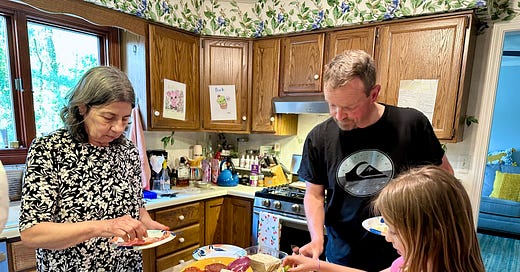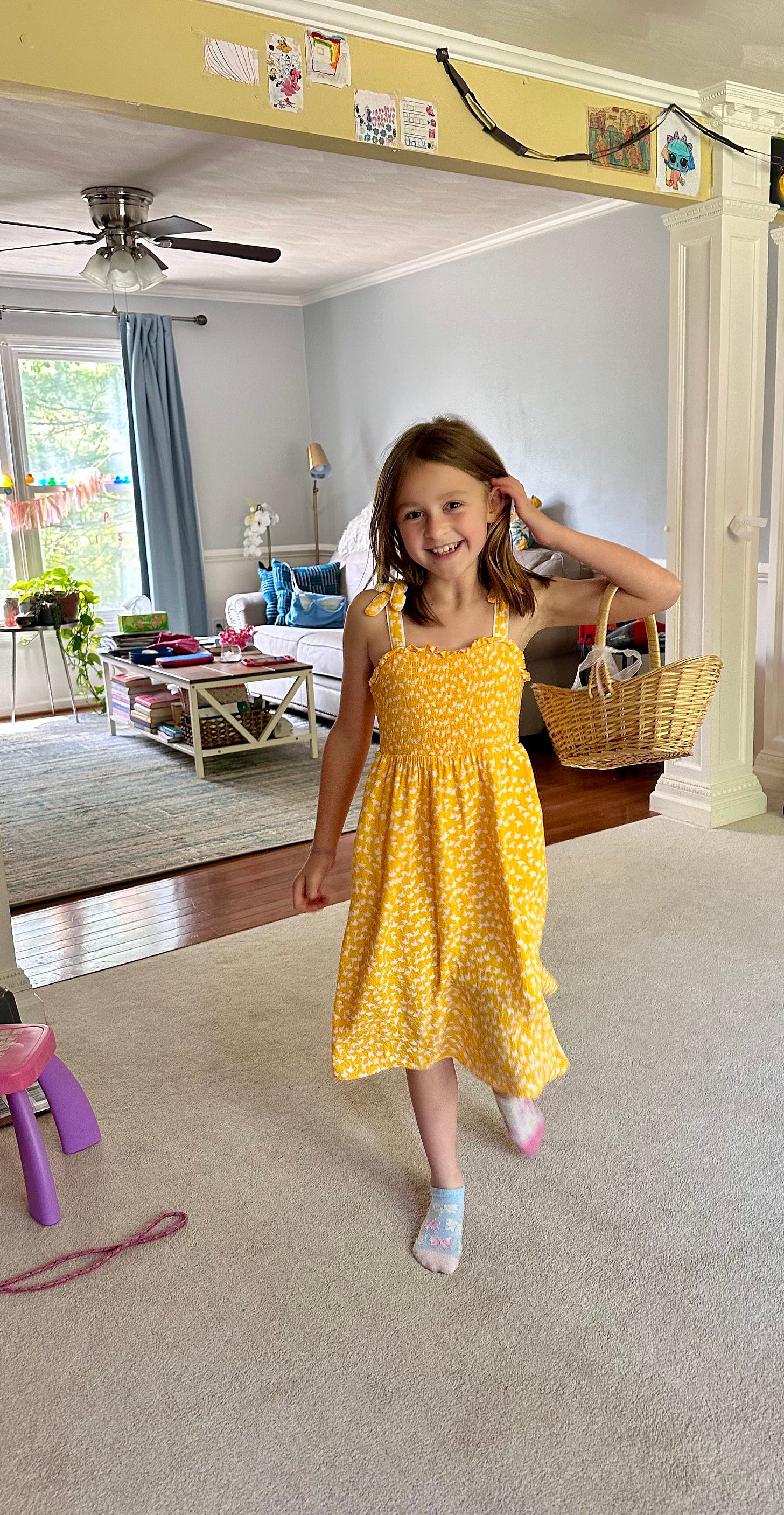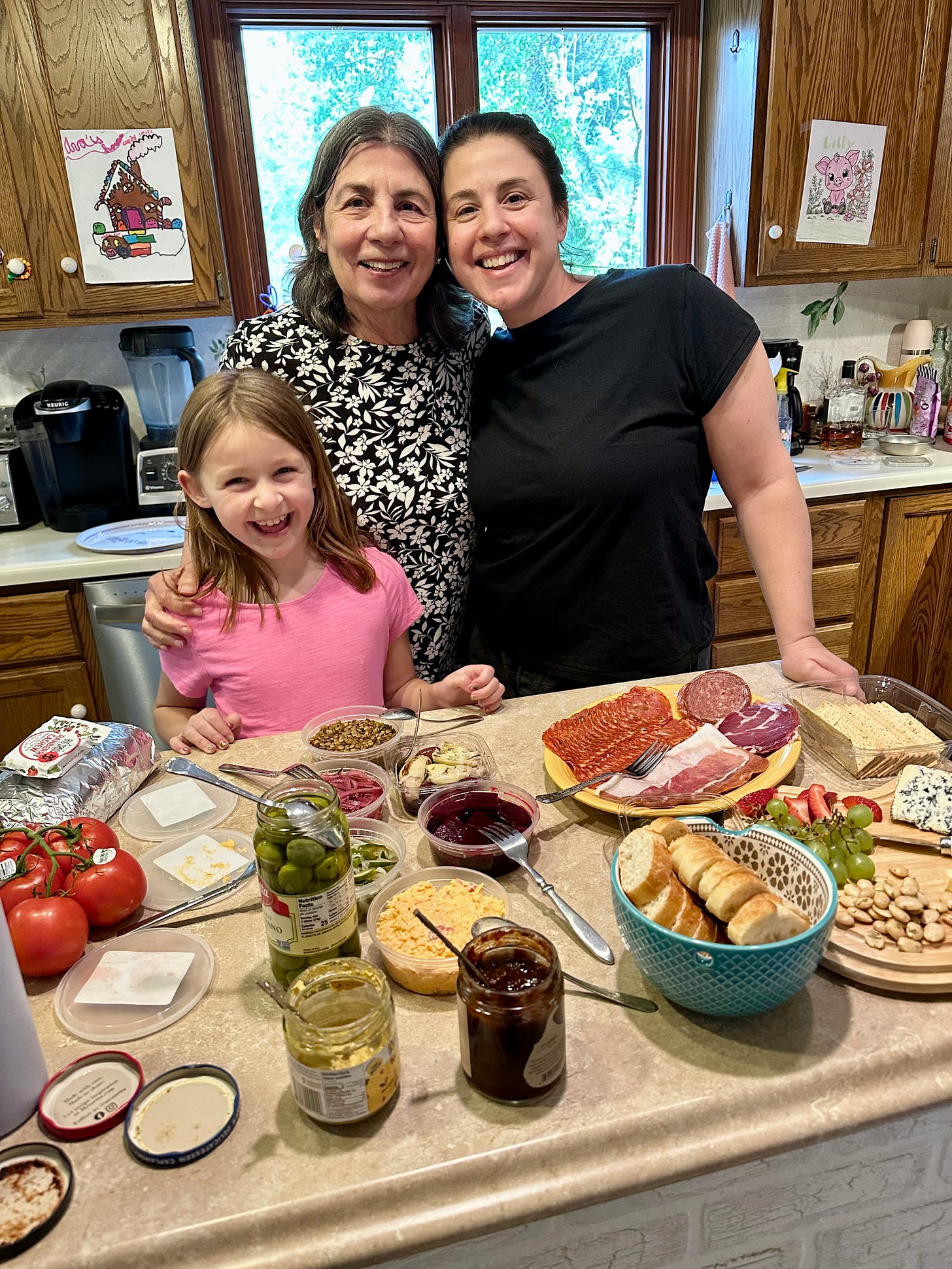Hello lovely readers! How’s everyone doing this week? One of my cousins recently responded to this question with “We’re just this side of sane.” I think that about captures it! Read on for this week’s newsletter, and as always, thanks for being here!
BELONGING: the feeling of security and support when there is a sense of acceptance, inclusion, and identity for a member of a certain group. (Source: Cornell University)
Over the weekend, I mentioned that I was planning to make BLTs for Easter dinner, something simple, which would preclude us from making bacon for brunch that day. Ava looked up at me with her big brown eyes and said, “What am I having?” I asked if she wouldn’t have a bacon sandwich and she shook her head no. Thinking quickly, I said, “I got you mac and cheese,” referring to her favorite boxed mac.
“Yay!” she said, smiling. But it was short lived. “I feel like whenever there’s a holiday and you make something, it isn’t something I like.” (I don’t think this is wholly true, because there’s always something she likes for Thanksgiving and Christmas, which are the bigger holidays in our house.) I explained that Easter wasn’t a big celebration for our family, apart from dying Easter eggs, doing an Easter egg hunt, and tucking into Easter baskets brimming with gifts (which, to be honest, already feels like a lot!).
But what she said rooted me in my tracks as a million thoughts cycled through my head. I don’t have time. I’m doing my best. I’m falling short. Later, during bedtime, we chatted some more and she pointed out that even during regular dinnertimes the grownups are often eating one thing and she’s eating something different. “It makes me feel left out,” Ava said.
The last thing I’d want is for my child to feel left out, especially at the dinner table, a place where I’d always found belonging, whether it was tucking into grape leaves and hummus at my Lebanese-American grandma’s table or slurping snails in Paris with my Dad. Food is so central to my identity and my sense of belonging, as a food writer, as a Third Culture kid, as someone who finds joy and social belonging in gathering at the table.
I explained that it was challenging to come up with something that everyone wanted to eat—my mom is gluten- and dairy-free, my husband has an affinity for meat and potatoes or spicy curries, and there are lots of things that Ava doesn’t eat (though she’ll usually at least try them). I wanted her to hear where I was coming from without it making it seem like it was a burden for her having brought it up—later I realized how much self-awareness and emotional intelligence she has to be able to articulate something like this.
I shared that it could be a full-time job to menu plan, shop, prep, and cook meals that everyone would eat. And that even if you have the means and time to do so, there’s no guarantee that everyone will eat it, and how disappointing that can sometimes feel for the person who cooked. I had to tread carefully here—part of this situation is ensuring that my daughter feels like she belongs, but without it being at the expense of excluding myself and my needs.
So much of my personal growth work, and what I explore in my forthcoming memoir, is about learning to feed myself. This includes what I’m hungry for on the plate, and not martyring myself into everyone else’s preferences, as well as recognizing when I’m full, and not using food to fill a void. It also includes honoring my professional and personal ambitions and what I’m seeking that will bring me a sense of fulfillment.
It would be so easy for me to default into old patterns of people pleasing—cooking and feeding can be a performative act, especially for mothers, and I don’t want how well I feed my family to be a measure of my worth, nor do I want to use it as a means of control. I made you this nice meal, now sit here and eat it. And take seconds! I am trying to divest from cultural norms and inherited familial ideals, but that also means relinquishing control and also disappointing people sometimes.
To make Ava feel more included, my husband had the idea to let Ava pick what’s for dinner one night a week, like breakfast-for-dinner, and we all eat what she wants. I also told Ava that she’d need to try eating more foods. And for Easter, we collectively decided on a low-lift grazing board so that everyone could assemble their own plates according to their preferences. My mom and I had fun shopping for charcuterie, cheese, prepared salads, pickles and olives. We arranged everything simply, forks in plastic tubs, spoons in jars, meats on one plate (no salami rivers or prosciutto roses here), cheese on another, some leftover fruit from brunch alongside. It wasn’t Instagram-worthy, but we actually all sat down together at the same time. It was a gift to break bread together, to truly savor our food, connect with one another, and cherish our collective place at the table.








I’m so happy to read that your memoir is coming soon! Congratulations. When? Where?
I’m still in revision.
Thanks again for the great memories I have from the Paris restaurant you suggested.